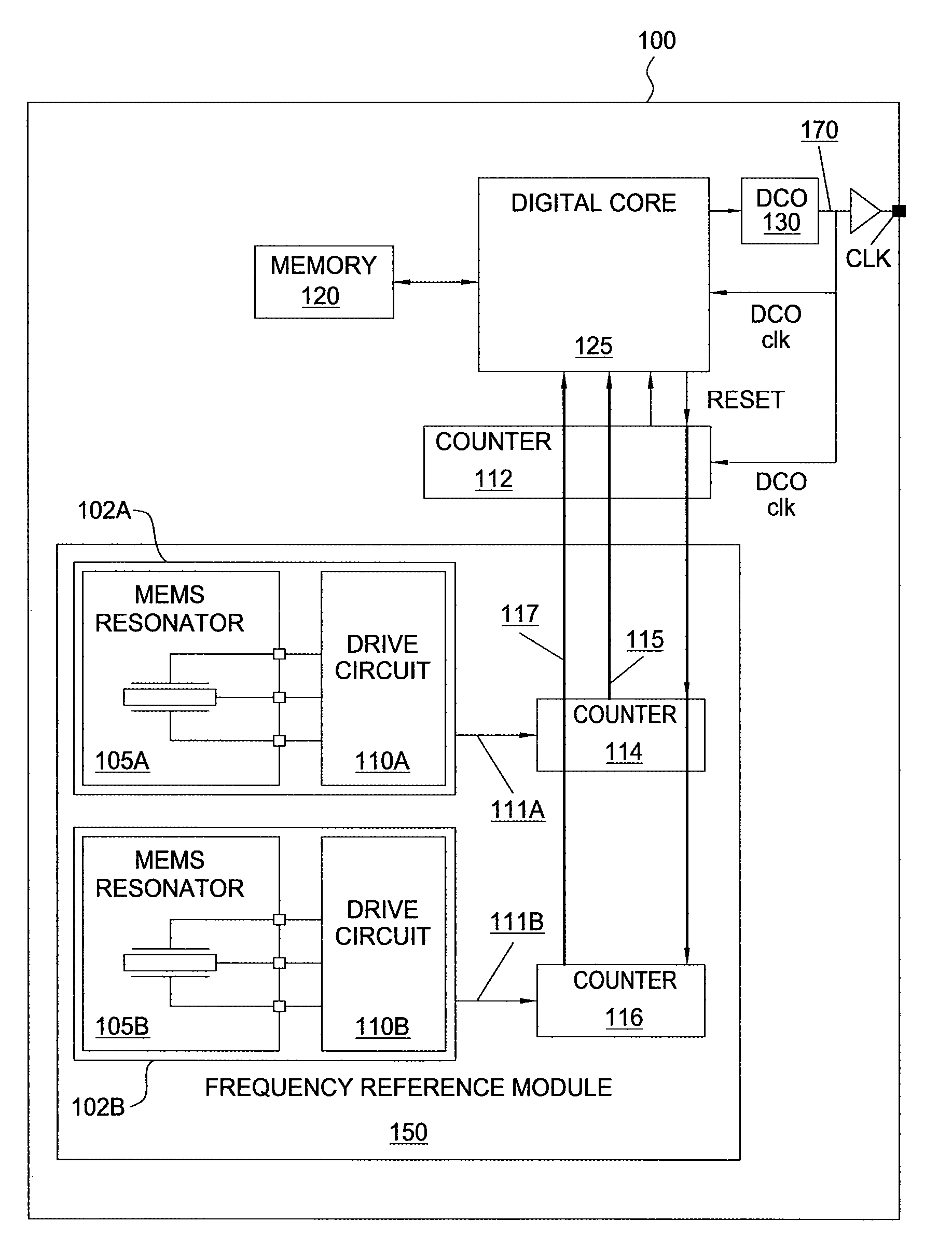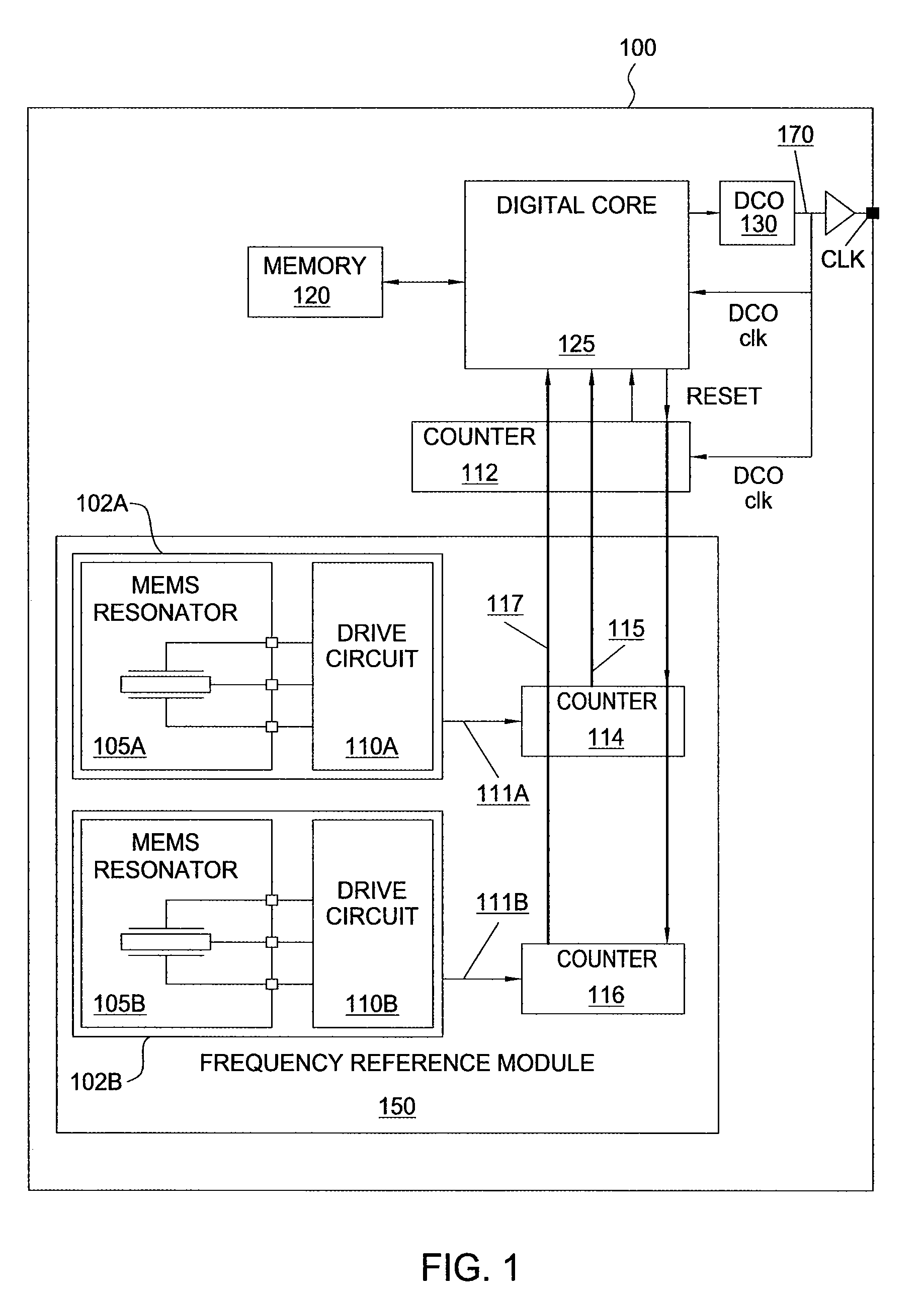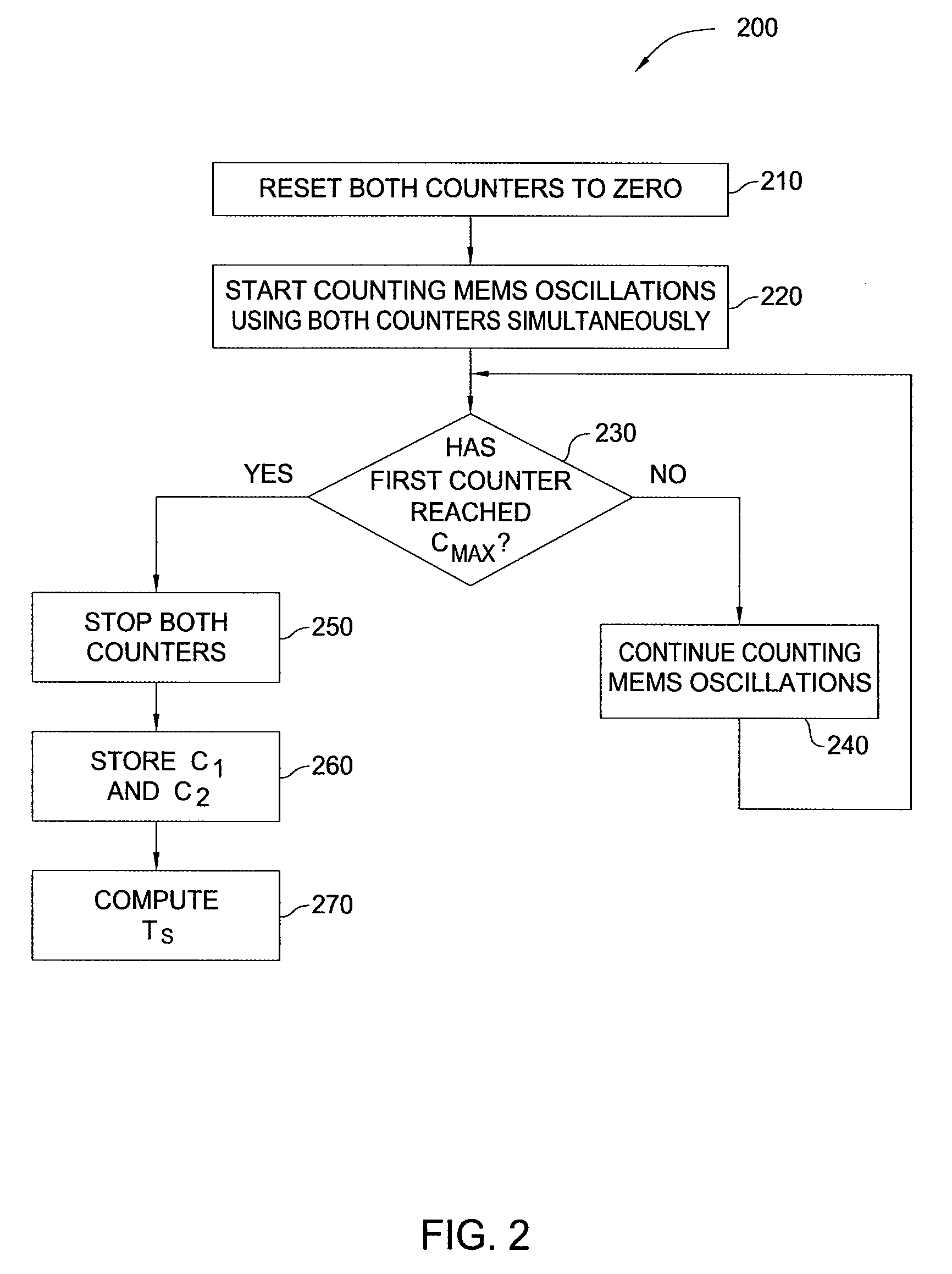Dynamic temperature compensation for a digitally controlled oscillator using dual MEMS resonators
a technology of dynamic temperature compensation and digital control, which is applied in the direction of process and machine control, optical radiation measurement, pulse generator, etc., can solve the problems of large error in output frequency, complex and expensive circuits of the inability to achieve fast and precise electronic temperature sensing circuits. even more complex and expensive to implemen
- Summary
- Abstract
- Description
- Claims
- Application Information
AI Technical Summary
Benefits of technology
Problems solved by technology
Method used
Image
Examples
Embodiment Construction
[0017]FIG. 1 is a conceptual illustration of a frequency source 100, according to one embodiment of the present invention. As shown, the frequency source 100 includes, without limitation, a digitally controlled oscillator (DCO) 130 that generates an output signal 170 (referred to here in as a “DCO output signal”), a frequency reference module 150, a digital core 125, a counter 112, and a memory 120. Typically, the frequency of the DCO output signal 170 is temperature-dependent and varies in an unpredictable manner as a result of temperature fluctuations within the system. As described in greater detail below, the digital core 125 and the counter 112 form a servo control loop for maintaining the frequency of the DCO output signal 170 at a target value set by the requirements of a particular application, despite temperature fluctuations. Arrows indicate electronic signal paths within the frequency source 100. The frequency source 100 may be implemented in any type of electronic device...
PUM
 Login to View More
Login to View More Abstract
Description
Claims
Application Information
 Login to View More
Login to View More - R&D
- Intellectual Property
- Life Sciences
- Materials
- Tech Scout
- Unparalleled Data Quality
- Higher Quality Content
- 60% Fewer Hallucinations
Browse by: Latest US Patents, China's latest patents, Technical Efficacy Thesaurus, Application Domain, Technology Topic, Popular Technical Reports.
© 2025 PatSnap. All rights reserved.Legal|Privacy policy|Modern Slavery Act Transparency Statement|Sitemap|About US| Contact US: help@patsnap.com



